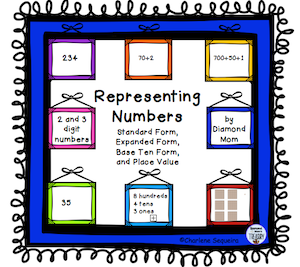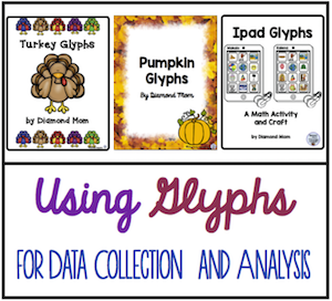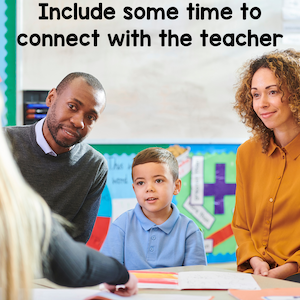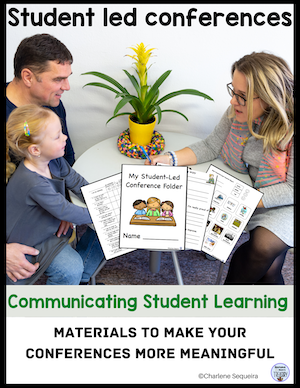|
There's nothing quite like the feeling of struggling to read or write. It can be frustrating, overwhelming, and even a little bit scary for kids. But there's hope! I often hear the question, "What can I do to help my struggling readers and writers?" While there is no one-size-fits-all answer to this question, there are a few strategies and activities that can be used to help struggling students. Supporting your studentsIf you have a wide range of reading abilities in your class, it is important that you find ways to support all your students in developing and expanding their skills and knowledge. One of the best ways to do this is to create reading groups of similar abilities so that you can target the instruction to the specific needs of each group. Note: There can be many high achieving readers and writers in the class, but for this post, I will be focusing on those who struggle.) Ideas for struggling readersDo guided reading groups. This can be done with just a few students at a time, so everyone gets the individual attention they need. Choose books that are at the right level for each group, and then take turns reading aloud. As you read, stop and discuss vocabulary words or tricky concepts. This will help your students build their comprehension skills and confidence. Create some reading center activities that complement what is happening in the reading groups to help kids to remain engaged and motivated to keep trying. For example: 1. Provide a variety of books of a similar level for kids to choose to read quietly alone or with a partner. Make sure you have a variety of different genres of books for your struggling readers. This will help them find something that interests them and that they can read at their level. 2. Create word lists or anchor charts with high frequency words or sight words. The students can use the word lists to help them read the books. 3. Provide word games and activities that they can use to improve their decoding and fluency skills. Be sure to set realistic goals for struggling readers and help them celebrate their progress along the way. Ideas for struggling writersGetting started is one of the most difficult things for struggling writers. There may be a variety of different reasons for this, but it is a barrier that they need to get past in order to become good writers. Sometimes it is hard to come up with an idea, or maybe it is a fear of not knowing how to spell words, or maybe it is the motor skill of writing itself. These are only a few examples of things stopping the writing from happening. If we provide support to help with these roadblocks it is amazing what can happen with our struggling writers. Here are a few suggestions that might help our writers to get started. For those who have difficulty coming up with ideas1. Try using favorite interests, hobbies, events, or things that are important to them as starting points. Work on brainstorming ideas and organizing thoughts. 2. Encourage them to draw pictures or create a graphic organizer before actually writing. Provide a variety of different writing supports such as sentence starters, word banks, scaffolds, templates or prompts to support getting their ideas down on paper. 3.Encourage them to write for 20 minutes each day and help them brainstorm ideas for stories or poems. Give struggling writers plenty of opportunities to practice writing, whether it's through daily journaling or regular writing assignments. For those who worry about correct spelling1. Provide word banks or word lists and dictionaries. 2. Encourage them to use approximations to get their ideas down and then go back and check for the "dictionary spelling". (It is important to get the ideas out first and then edit.) 3. Have someone scribe for them at first and gradually get them to write on their own. Don't forget to provide plenty of praise and encouragement! For those who have motor issues1. Create an area with paper, pencils, and crayons. The students can practice writing their names, letters, and words. They can also draw pictures and tell stories. These activities will help the struggling writers to develop their skills. 2. Set up a dictation area where they can orally tell their stories and then have them transcribed. Set up a writing centerEstablish a writing center where struggling writers can go to work on their skills. Here they can work on different writing strategies. They might work on brainstorming ideas, organizing their thoughts, or using descriptive language. They might work on specific writing goals with your guidance. For example, you might have a student who is working on adding more detail to their writing. Give them some sentence starters that they can use, and then have them add as much detail as they can. Alternatively, you might have a student who is working on editing their work for grammar mistakes. Give them a list of common mistakes to look for, and then have them edit their own work or someone else's. Writing centers are flexible, so you can tailor them to meet the needs of your students. Help struggling writers set realistic goals and celebrate their progress along the way. Be sure to praise their efforts and provide specific feedback on their work. Assess how they are doingFinally, make sure you have a plan for monitoring the progress of your struggling readers and writers. This will help you know if they are making progress and where they need additional support. By taking these steps, you can help struggling readers and writers get the support they need to be successful in your class. Organizing reading and writing groups can seem daunting, but it's worth it! Your struggling students will benefit from the extra attention and support. And who knows - you might just see some strong readers and writers emerge. Grab a free copy of this set of templates and scaffolds for your young writers by signing up for my newsletter. Related Posts
0 Comments
Have you ever found yourself in the store trying to figure out if you have enough money for all the things you want to buy? Or maybe you are hungry and hoping you have enough money to get food to eat. How about calculating how many buttons you will need for markers for a new bingo game? These are only a few examples of why we need to understand numbers and how they work. When it comes to teaching kids math, there's more to it than just rote memorization. Sure, memorization is important, but it's also essential that students develop their number sense skills. What is number sense?Number sense is basically an instinctive understanding of numbers and their relationships. It's what allows us to quickly add up a grocery bill in our heads or estimate how much time it will take to complete a task. It includes an understanding of place value, addition, subtraction, multiplication, division, decimals, fractions, percentage, and ratio. Most importantly, number sense is developed through exploration and exposure to a variety of number concepts and problems. Number sense games are a great way to help kids develop this important skill. Number sense gamesAs a primary teacher, I am always looking for fun and engaging math games to play with my students. Games are a great way to help kids develop number sense, and they also make math more fun! Here are four number sense math games to try: 1. Skip counting: To play, students simply choose a number to start with, then count up by 2s, 3s, 4s, or 5s until they reach 100. Not only does this help students to practice their counting skills, but it also helps them to understand place value and the relationships between numbers. 2. Comparing Numbers: To play, students simply choose two numbers and then compare them using the symbols >, <, or =. This game helps students to understand number concepts such as greater than/less than and equality/inequality. 3. Number BINGO: To play, students try to fill in their bingo boards with numbers that match the number called out by the teacher. 4. Number Addition Bump: To play, roll two dice and add them up. Find the number on the bump chart and place a marker there. If someone else is on that number, you can bump them off. If there are no available numbers, you wait for your next turn and roll again.The goal is to be the one with the most markers on the chart at the end of the game. So there you have it - four great games for helping kids develop number sense! Why not give them a try in your classroom today? Place value activitiesPlace value is one of the most important concepts in math, and it's also one of the hardest for students to understand. That's why place value math games are such a valuable teaching tool. By playing these games, students can learn about place value in a fun and interactive way. Here are just a few place value games to try: 1. Place Value BINGO: This game is a great way to review place value concepts with your students. In this game, each student is given a bingo card with numbers on it. The teacher then calls out place values and the student marks off the corresponding number on their card. The first student to get bingo wins! 2. Place Value Sort: To play, you'll need a collection of place value cards with different forms of the number on them. The goal of the game is to match up the cards with the correct number. For example: 433, 400+30+3, and base ten form: 4 hundred blocks, 3 ten blocks and 3 units. 3. What's The Value?: In this game, kids take turns calling out numbers and the other players have to identify the place value of each number. For example, if someone calls out "123," the other players might say "1 hundred, 2 tens, 3 ones." Representing numbers resourcesBeing able to recognize and represent numbers in various ways is an important skill. I have created a couple of activities to help with this. Representing Numbers is a multi-faceted activity with task cards for base ten form, standard notation, and expanded notation. It also includes a bingo game. You can find out more about how to use it in the video below. These place value worksheets help with identifying and writing out numbers in standard notation, expanded notation, base ten form, and number words. There are several themes to choose from Here is a place value practice activity that can be used anytime. Get a free copy by signing up for my newsletter. I hope these games and activities help you with providing importance practice using numbers and place value so that your students will be able to handle situations in the real world. Related PostsWhen I was first introduced to using glyphs in math, I'll admit I was a little dubious. It seemed more like an art project than a math tool. But once I saw the benefits of using glyphs, I was sold! What are glyphs?Glyphs are pictures with characteristics that represent different responses, which can be extremely helpful for visual learners. And because they're picture-based, they can also be a lot of fun! There are all sorts of glyphs out there, from traditional sun and star shapes to more modern emoji-style pictures. Many glyphs are used in our environment to represent different places, objects, and rules. How to use glyphsFor math, glyphs are great for comparing, contrasting and counting data based on the attributes in the image. Each attribute can be used to represent a different response. For example, a pumpkin has different shapes, eyes, mouths and number of teeth. The shape or style of these attributes can represent answers to questions such as what is your favorite food? This is a fun way for students to learn how to interpret data and make math more engaging. Plus, it's a great way to sneak in some extra Halloween fun! Sometimes glyphs are created by selecting different parts or images and putting them together to create the picture. Here are some examples of this type of glyph. Turkey Glyphs Ipad Glyphs Other times, glyphs are drawn based on the attributes that match the responses to the questions. Here is an example of this. The purpose of glyphsRegardless of the type of glyph chosen, the purpose is the same - to interpret data. They are great for learning how to interpret data from the attributes and how they correspond to the questions. The purpose of the glyph can also be connected to various themes or subjects. A bookmark could be created to share things about a person such as hobbies, likes, dislikes, etc. An animal could be used to learn more about pets or animals that have been encountered, etc. A book might show what types of books or characters are favorites. You can create you own shapes and themes based on your needs and creativity. .As you can see, glyphs can be used for many different purposes. Once they are created, post them on the board and let the data interpretation begin. If you are interested in trying out some glyphs, here is a guide that might help. It is free for my subscribers. Click on the image to get your copy. Glyphs make math fun and engaging for kids, which is a great way to get them interested in learning about data interpretation. The possibilities with glyphs are endless. Related PostsIt's that time of year again! Kids are heading back to school and teachers are planning lessons. Before you know it, it will be time for student led conferences. I know that thinking about assessments already is daunting, but if you start doing a bit at a time you will be able to do it. It will all help you to be ready when it is time for conferences. As a primary teacher, I liked the student led conference format because it gave my students a chance to show off all of their hard work. It was also a great opportunity to get to know each student's strengths and weaknesses. Student led conferencesStudent led conferences are a fantastic way for parents and children to work together to reflect on the student's progress so far. It is an opportunity for the student to share what they are proud of, what goals they have set and what strategies they are using to achieve these. The student is in the driver's seat whilst the parent(s) and teacher play a supportive role. This format not only empowers the student, but also provides parents with an insight into their child's thinking and how they view their own progress. These conferences also give teachers an opportunity to reflect on their teaching and how well they are meeting each student's needs. Benefits of student led conferencesStudent led conferences offer a number of benefits for both the child and the parent. For the child, it is an opportunity to take ownership of their learning and to share their work and achievements with their parents. They also have a chance to practice their communication skills and build confidence. They can share their own perspective on their progress, which can be very valuable for parents to hear. For the parent, it is an opportunity to see their child in a positive light and to be involved in their child's education. It is a great way to ask questions and give feedback in an encouraging way. I believe that student led conferences are hugely beneficial for all involved and strongly encourage all families to attend. The teacher's roleThe role of the teacher is to facilitate the student led conference, ensuring that each student has the opportunity to share their learning. The teacher provides support and guidance to the student, and answers any questions from the parent. Student led conferences offer a unique opportunity for teacher and parent to connect with each other and with the student, promoting student achievement. Student led conferences can be a powerful tool for promoting student achievement and parent involvement in education. Preparing for student led conferencesPreparation is key for student led conferences. I sent home information for parents about what student led conferences are and how they can help their child succeed. I also included a sign-up sheet so that parents could choose a time that works for them. In the weeks leading up to student led conferences, folders were created with work that each child has done. Prior to the conferences, self evaluations were done and these were added to the folders. For each conference, an agenda was created with all the things that should be covered during the conference. After going over the agenda, I had the kids role play and practice going through the agenda list. They have a great time pretending to be parents and students for each other and it ensures that they know what is required when the actual conferences happen. If you would like to give student led conferences a try, I have created a learning journal for gathering up information that can be used for communicating student learning on a monthly basis. You can get a free copy by signing up for my newsletter. Do you think you would like to give it a try, but don't want to invent the wheel? I have created some templates and materials that can help to make your student led conferences successful. You can check them out here. Student led conferences are a great way for teachers, students, and parents to connect and communicate about student progress. With a little bit of preparation, they can be an enjoyable and stress-free experience for everyone involved! I used this format successfully for over 20 years. I highly recommend trying it. Related Posts |
About Me Charlene Sequeira
I am a wife, mother of 4, grandmother of 9, and a retired primary and music teacher. I love working with kids and continue to volunteer at school and teach ukulele. Categories
All
|

















































 RSS Feed
RSS Feed